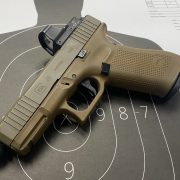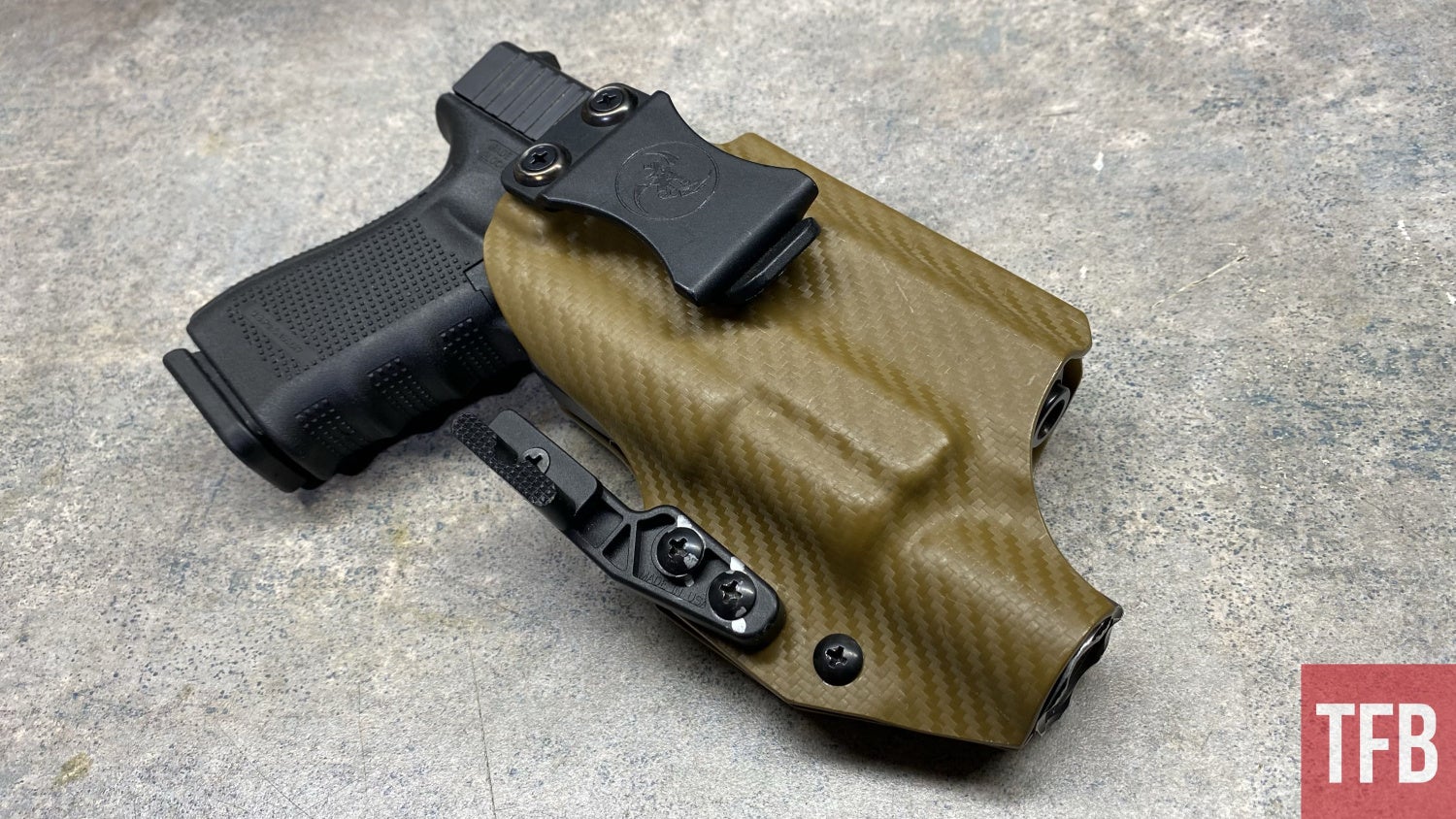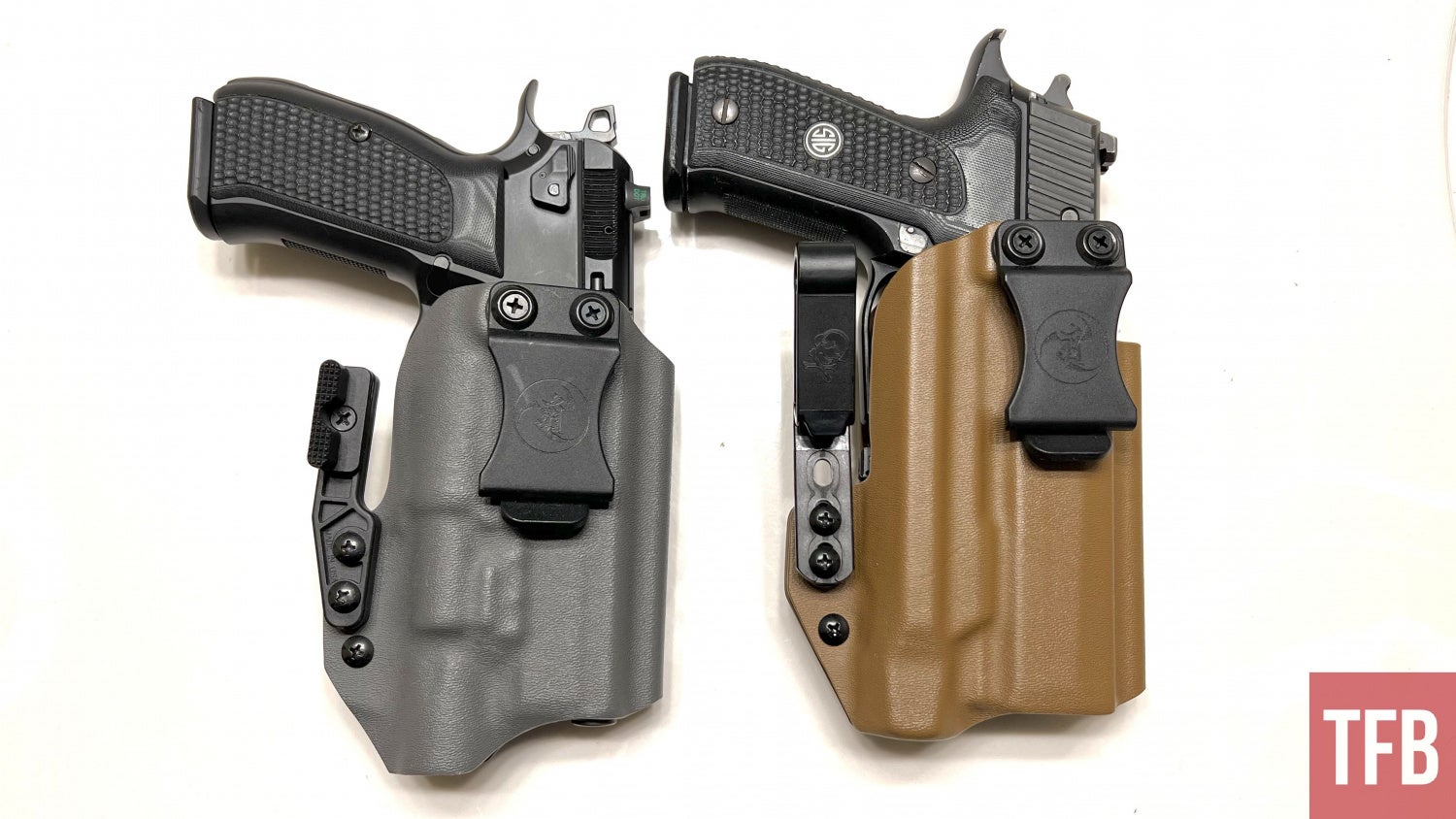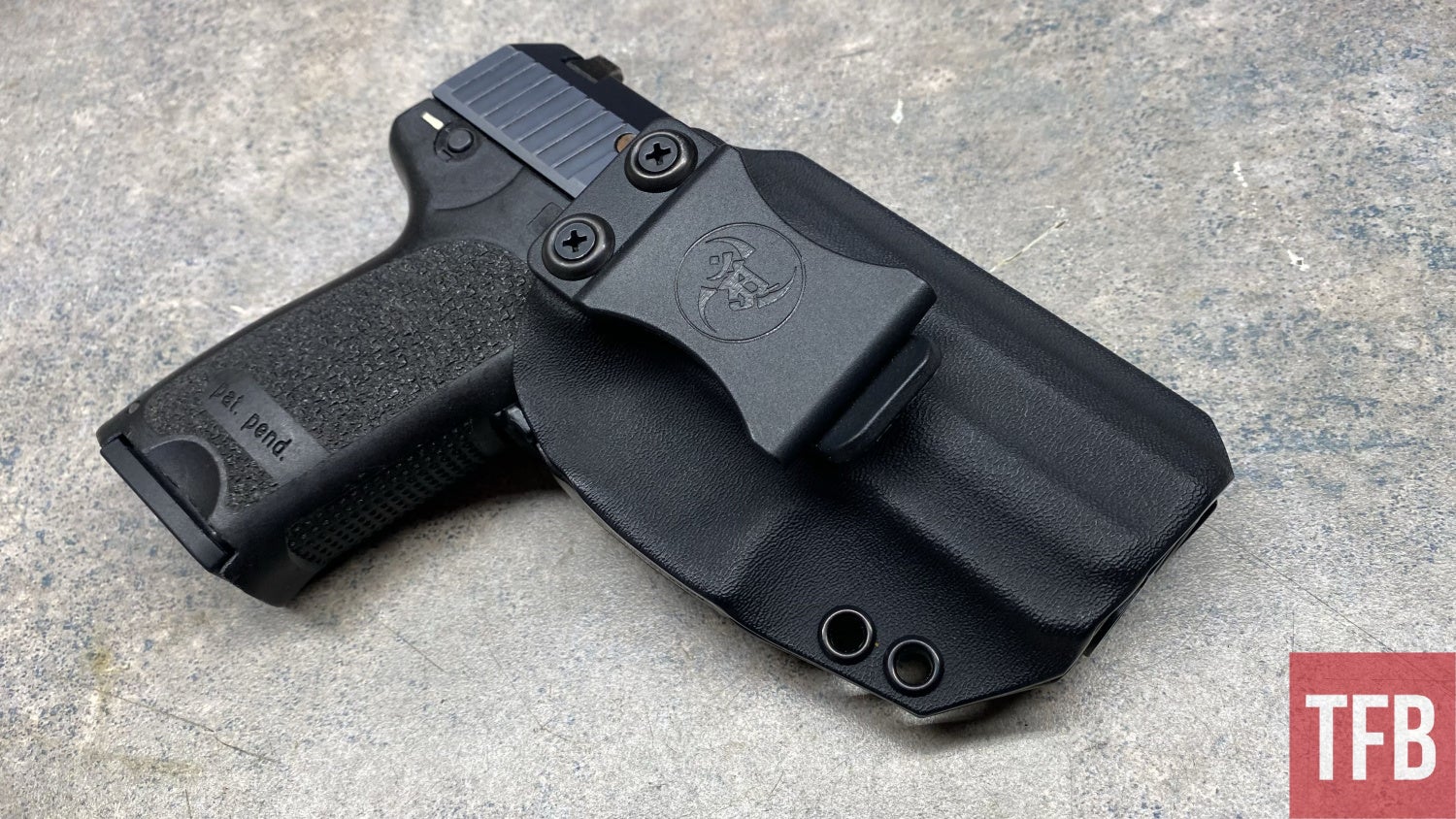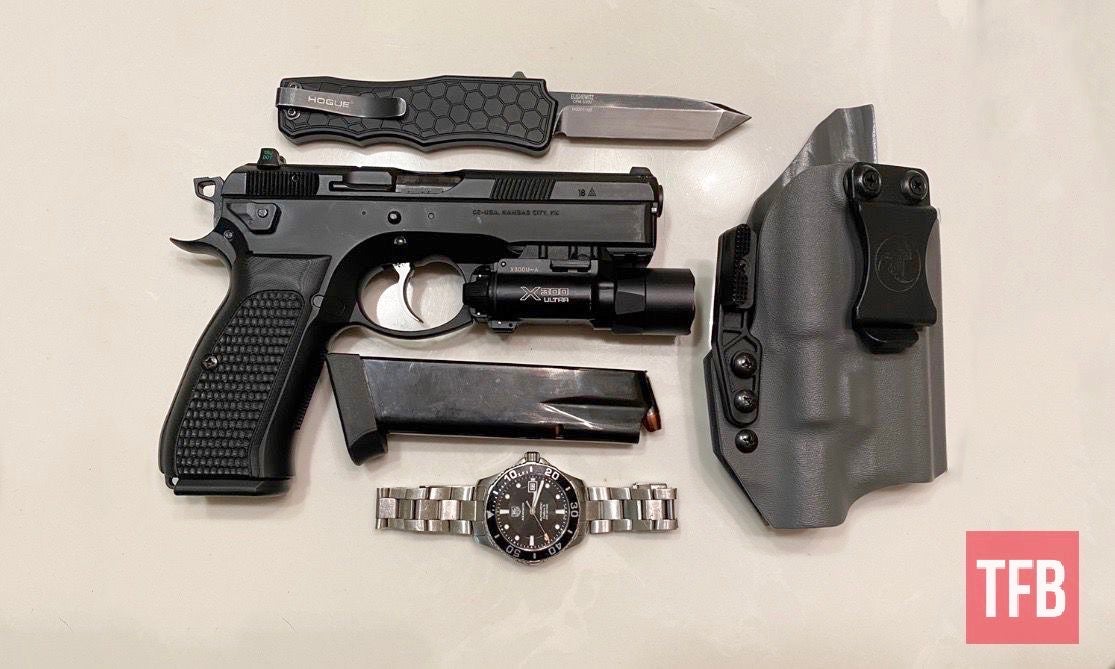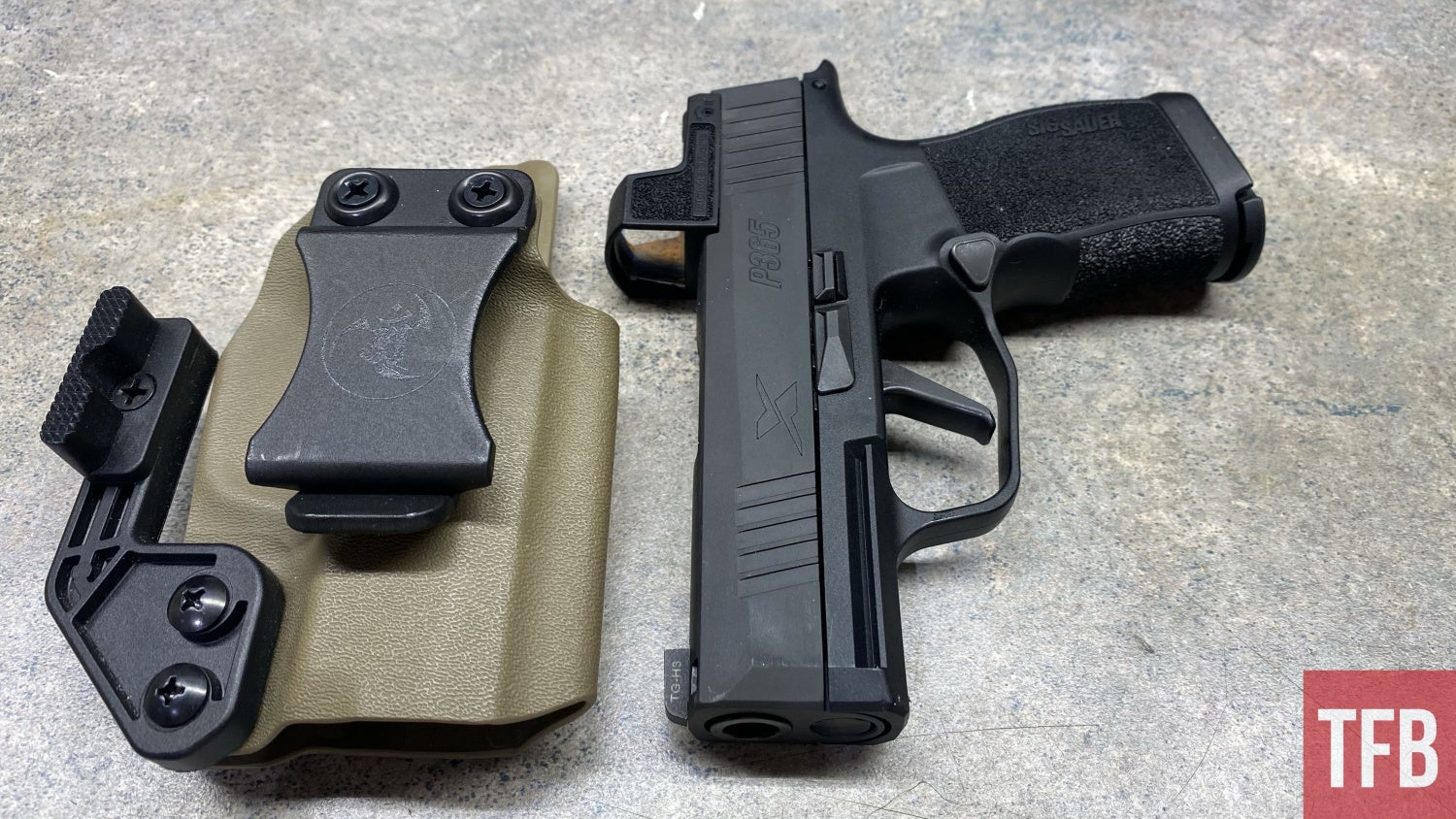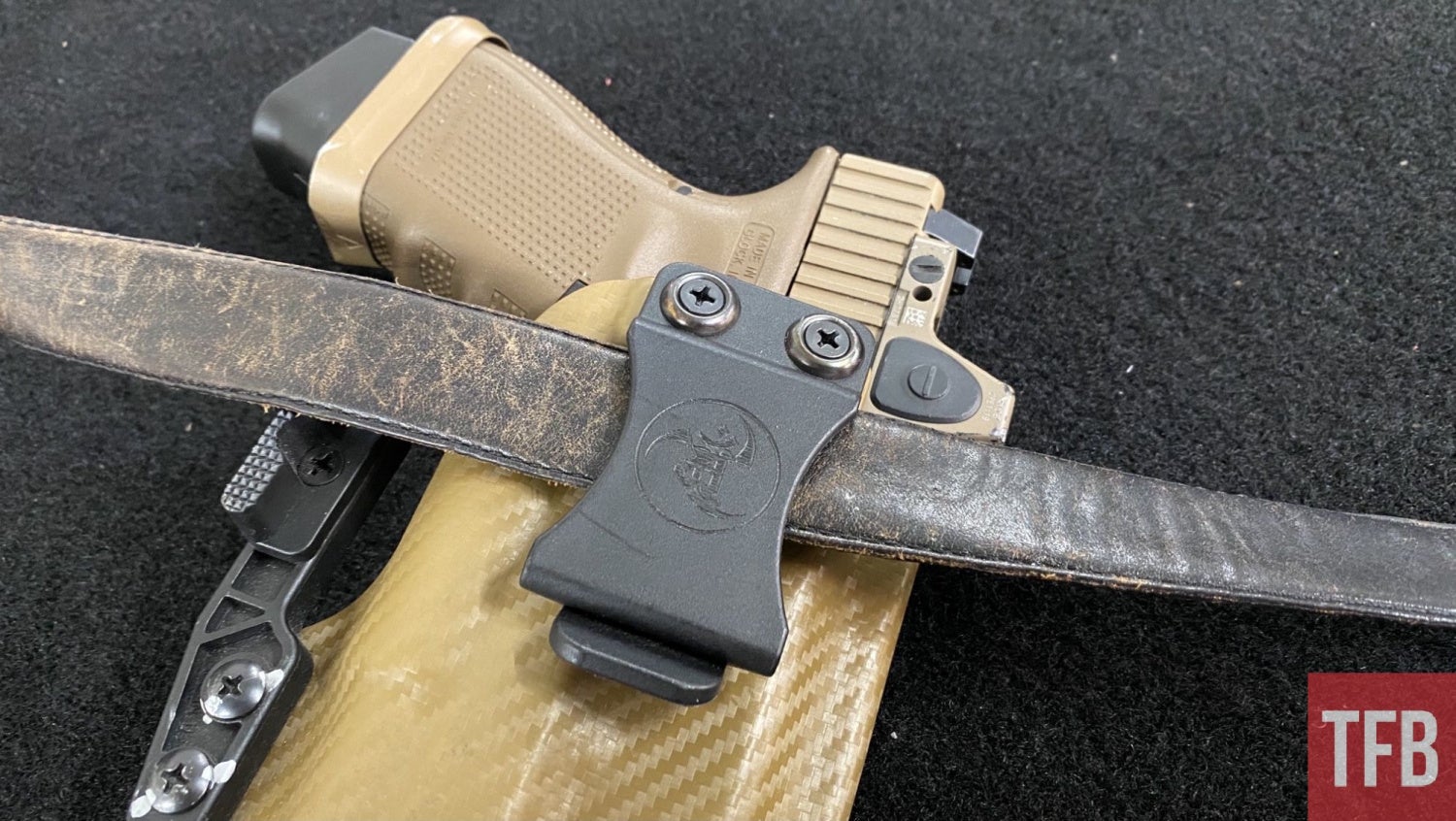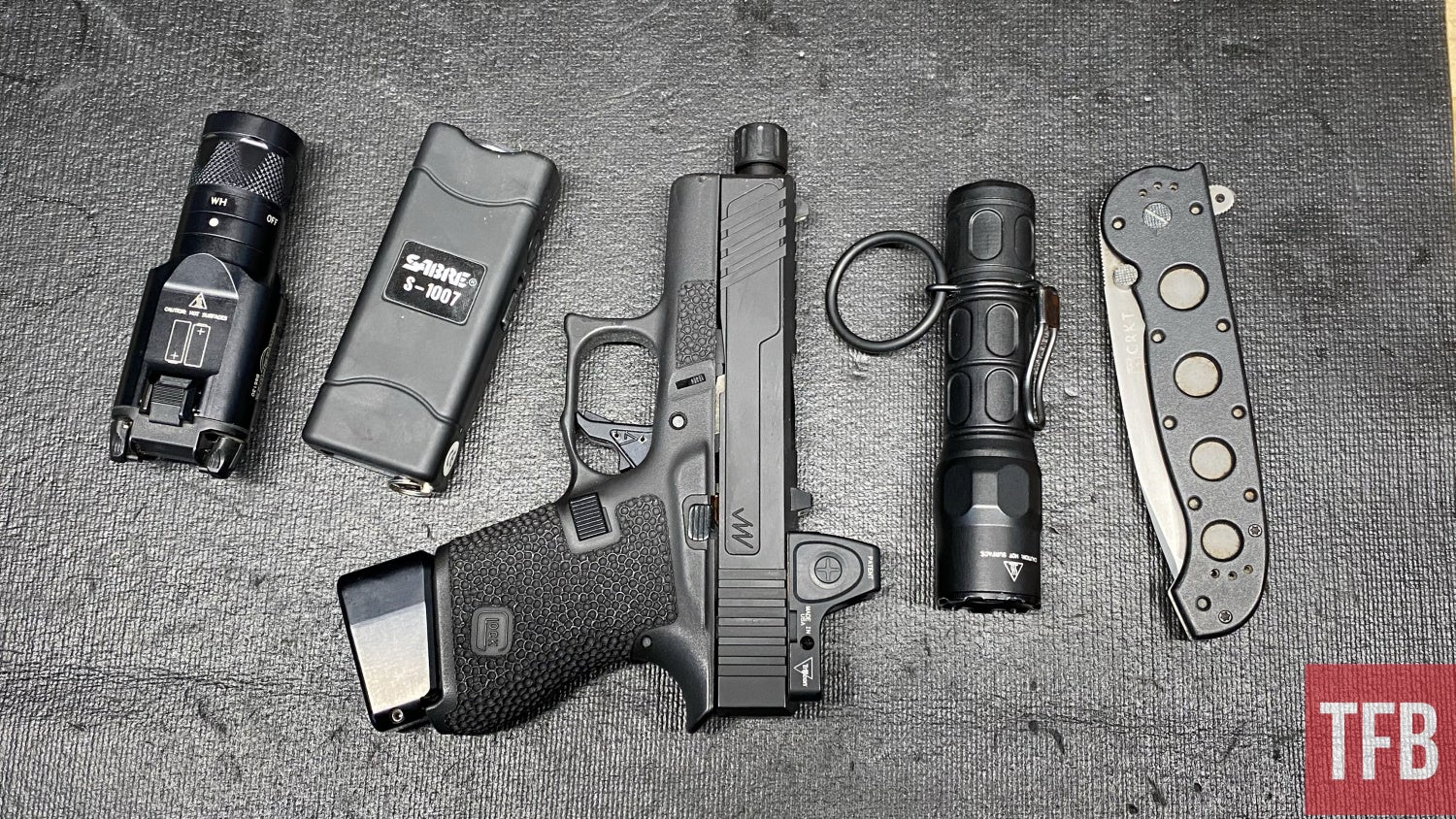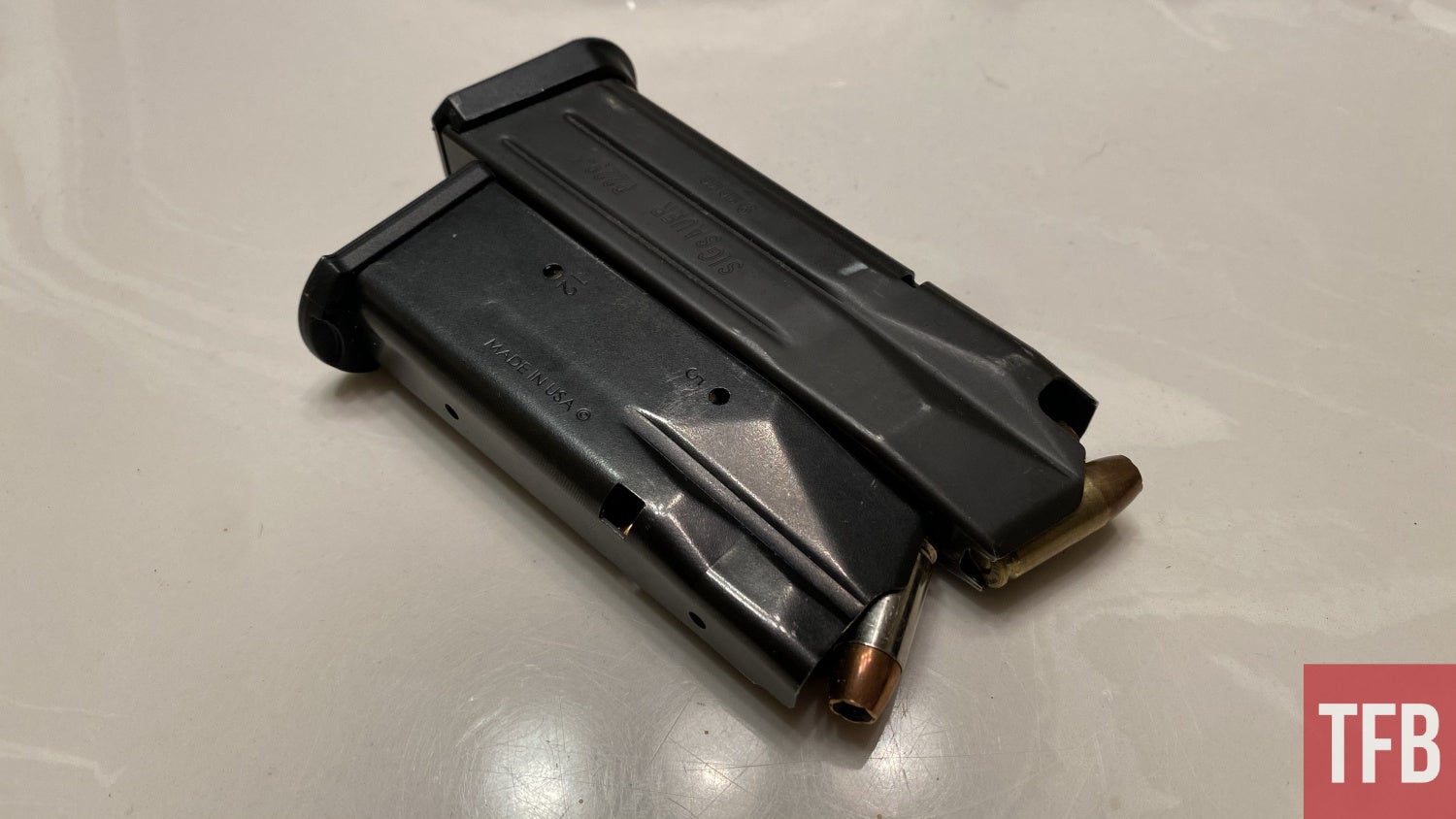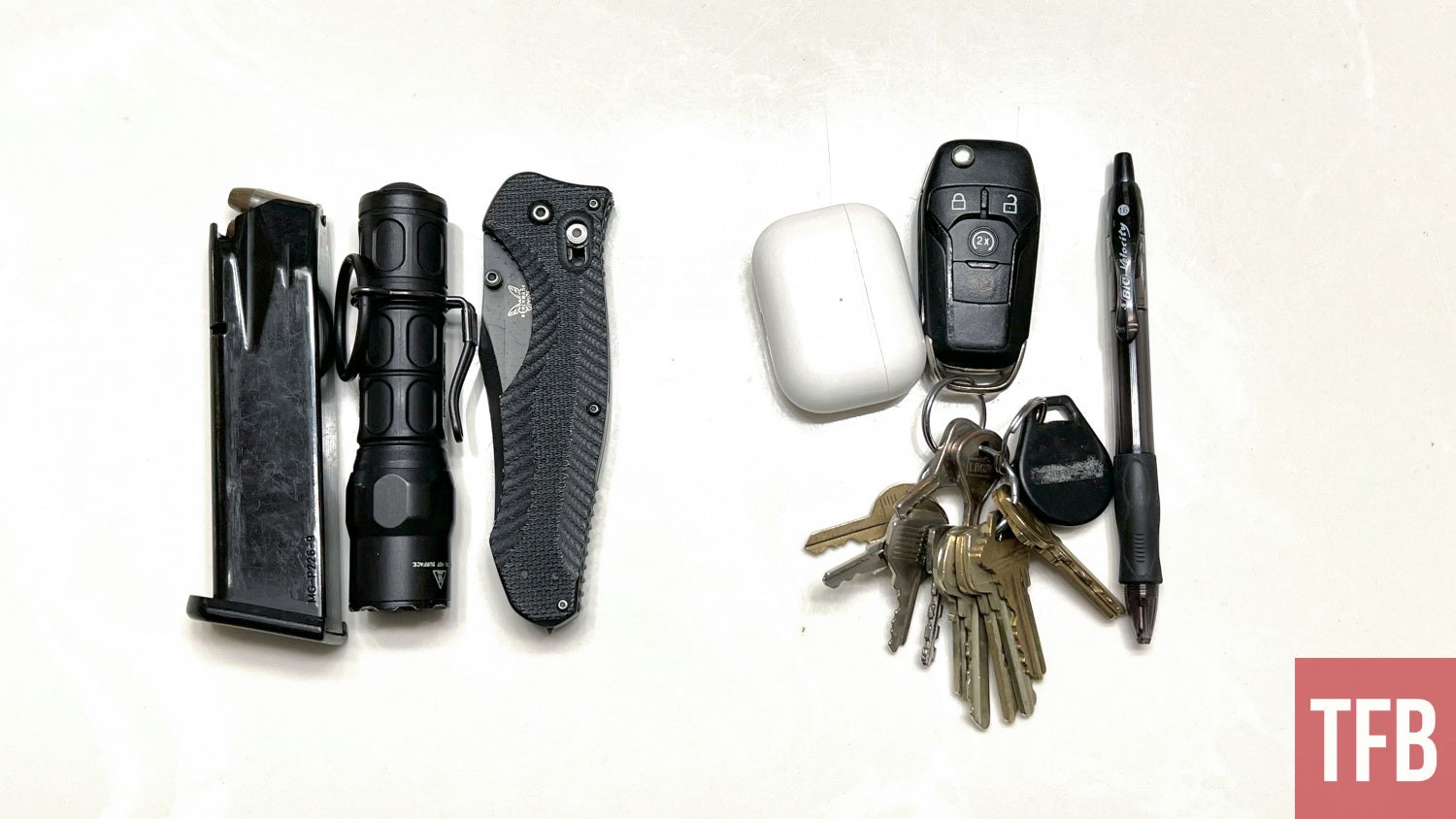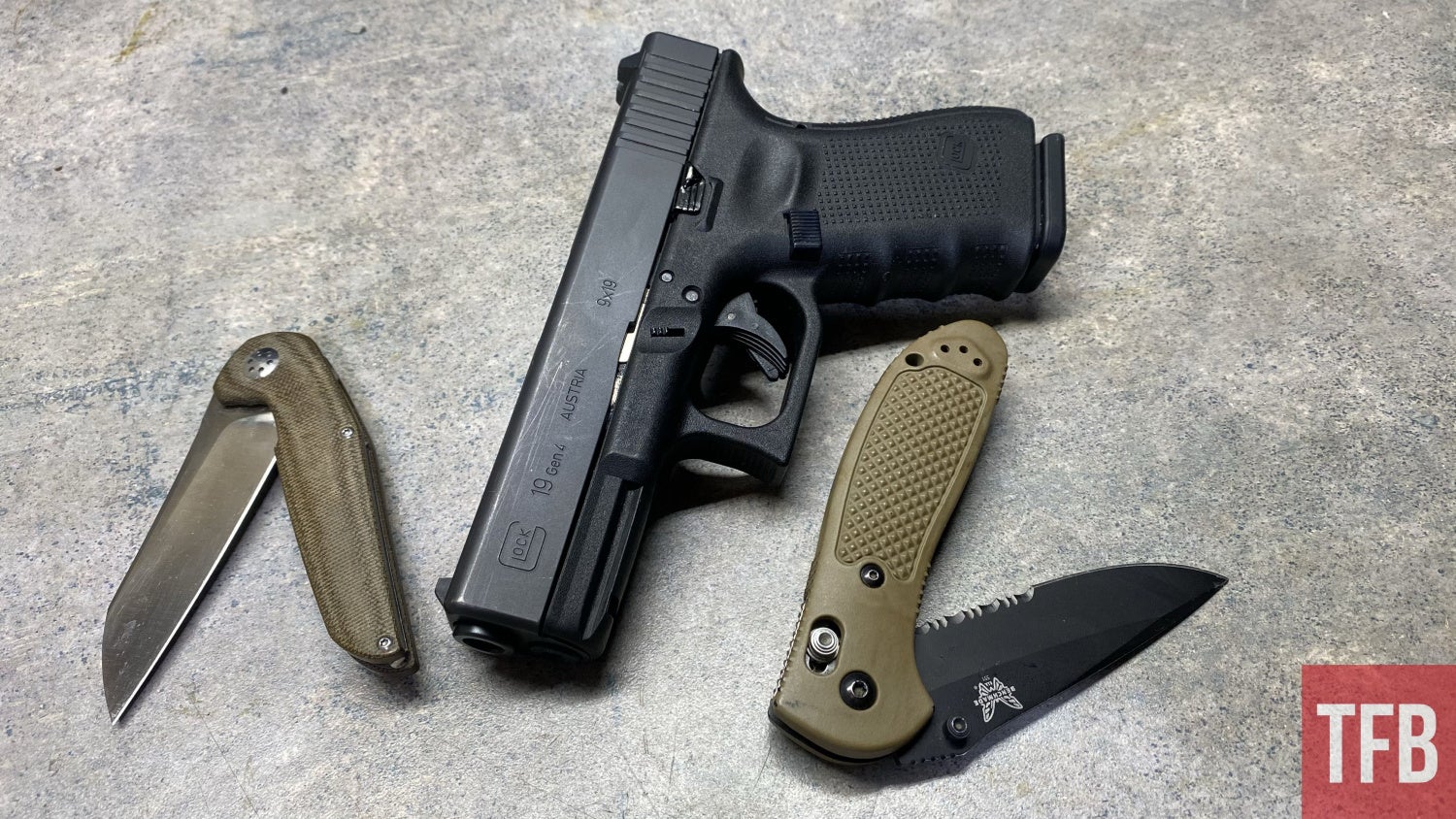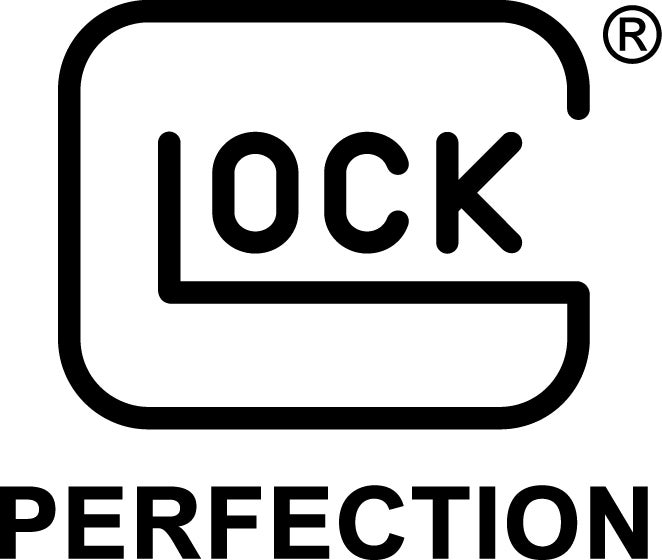Welcome back to this week’s edition of Concealed Carry Corner. Last week, we talked about taking a second look at off-body carry. Most of you said you still would use off-body carry as a last resort which I can agree with. If you missed out on last week’s article, check it out here. This week I decided to look at a couple of the smaller things I wish I knew sooner when concealed carrying a firearm. It’s always super helpful to look at small tricks or topics that will improve your overall experience and ease of carrying. Let’s take a look at a few carry tips I wish I knew sooner.
Holster Clip Height
The position of your holster clips can determine a lot when it comes to the overall ease of concealability and comfort. Both portions have their advantages as well as certain drawbacks depending on what position you decide to go with. Let’s dive into the positives and negatives when it comes to holster heights inside your pants.
Low Clips
Having a belt clip mounted lower on your body can have a number of benefits depending on what you’re planning on carrying and the overall size of the firearm. Having a belt clip mounted lower on the holster can increase the space in-between your belt line and the firearm frame. This allows you to draw faster since there’s no need to be fussy and fight to establish a solid grip on the firearm before drawing it out of the holster. These holsters are typically best with full-size or mid-size firearms. Carrying a larger firearm with a longer barrel length will give you a second point of contact stabilizing the lower belt clip and giving you a more secure carry.
The disadvantage of these holsters is when it comes to smaller pistols. Having a lower belt clip on your holster with something like the P365 and Glock 43 can be problematic. This can be an issue because it doesn’t have enough of the gun in your waistline to give it a proper balance to stabilize the gun. This leads to movement both vertically and horizontally in your pants which can not only be uncomfortable but end up giving you a lack of confidence. I prefer lower-mounted belt clips on certain firearms that are larger but it’s always an absolute no go on smaller guns with the lack of stability. Having the frame more exposed with this setup also can lead to a greater amount of printing if you’re only using a shirt or light concealment garment.
High Riding Clips
The other route to go is a belt clip that rides fairly high on the holster concealing more of your firearm inside the waistband or in your pants. Most of my holsters are of this style. This allows more of your gun to be naturally concealed and makes concealing a larger firearm much easier since the majority of the firearm is either in the waistline or paints rather than riding higher on your abdomen. Carrying something like my Glock 17 and SIG P226 are both great examples of easily concealing them with a higher-mounted belt clip.
The big disadvantage of these holsters is the lack of accessibility to the grip under stressful drawing. These do take a bit of practice to effectively draw from concealment and with time it’s definitely possible to become just as fast as you would be with an easier holster draw. if you have multiple layers on like most do this time of year, these lower profile holsters aren’t as necessary but during the warmer months, they are much easier to conceal with.
Items Prioritized In Each Pocket
One of the other really important tips I learned over the years was actually from pocket-carrying early in my life. I always believed you should never put anything else in your gun pocket with the firearm. Everything from keys, a pocket knife or air pods should be stuffed into the left pocket keeping the right clear for only your firearm. These days, I don’t carry in my pocket much anymore since I prefer inside the waistband carry, but the idea of pockets having their sorted items still is stronger than others.
Emergency Items
Everything I need that’s important in an emergency situation will always go in my left pocket. whether it’s a handheld flashlight, spare magazine or tourniquet, it’s always good to keep those things in your support side pocket. During an emergency, there’s a good chance your right hand will be occupied with your firearm, but your support hand will have access to those essential items if you need a magazine change or handheld light to have more light in a low-light situation. Those of you who are left-handed will simply flip this around so your right pocket is the emergency items pocket and your left will be the everyday items.
Everyday items
I went from carrying absolutely nothing to carrying everything non-essential in my right pocket. At first, it was a fairly hard transition but once you start to adjust, it really starts to make sense. Everything from your keys, AirPods and pocket change will go in your right pocket. Whenever I get receipts or anything like that it automatically goes into the right pocket just to make things simple. Having a system where you can prioritize items into one pocket or another makes life simple and under stress, you have a single place to look for everything you may need in an emergency
Overall Thoughts
This is by no means a comprehensive list of tips to fix all issues, but rather a few small things I have picked up along the way. The best advice I can give to people carrying a firearm is to try to carry the minimum you need to protect yourself and live a comfortable life. Some of you may add in other items and pick out gear that best suits your lifestyle or choice which is completely understandable.
The holster height is an interesting thing to look at just because I don’t see a ton of individuals talking about the pros and cons of belt height. Let me know about your preferences on holster height in the comments below. If you have questions about holsters or concealed carry in general, feel free to shoot me a message on Instagram @fridgeoperator. Stay safe out there and we will see you guys next week.
TFB’s Concealed Carry Corner is brought to you by GLOCK


